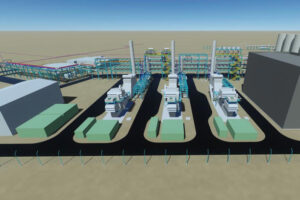The retrofitting conundrum
Making our existing housing stock more energy efficient through retrofitting will be vital to reducing carbon emissions and tackling fuel poverty. Yet we’re still building problems for the future
Earlier this month a new company start up was launched describing itself as an ‘energy efficiency building brand’.
Enhabit, which was launched at an event attended by housing and planning minister Brandon Lewis, will specialise in the retrofit of existing buildings ‘to incorporate high levels of insulation and other new technologies, so they are more air tight, more comfortable to live or work in and cheaper to run’.
The interesting part is not that the company is advocating retrofitting of energy efficiency measures, none of which is anything new. However, the definition of its service as a brand that people can buy into is interesting. I suspect architects would think of it more as a service provider who, in this case, has in-house experience and a solid base of recommended suppliers of sustainable technology they can recommend. Most architects would consider this is what they already do, although with perhaps a much broader breadth of project types than home refurbishments with sustainable design. That said, few would package their works and services quite so completely.
But Enhabit’s launch is a reminder, if one was needed, of a huge challenge that we face as a country. The need to upgrade existing housing stock is fundamental given the massive proportion of properties already in existence that perform poorly from an energy efficiency and carbon emissions perspective. In London alone 20 million tons of waste is sent to landfill every year. Nearly half of this is from the construction industry, and a large portion of this is from demolition of existing building stock. Simply building better is not enough – we need to improve what is existing.
Sustainability is integral to my work. I’m aware of many technologies that are out there, and have an opinion on what works, what is affordable and what my clients are willing to take on board. Sadly, not all clients are driven by strong sustainability desires and many builders tend to be resistant to anything other than what they are familiar with to achieve the minimum required under building regulations.
Tackling this challenge has become more feasible as technology improves and we develop a better understanding of the impact of retrofitting and ways to micromanage energy requirements. However, full retrofitting of existing housing is not a light touch and can be costly and cause significant disruption. We have a responsibility to educate and advise around what is possible, what value it adds and why a client should pay the extra labour and materials to implement that solar panel, rainwater harvester, air source heat pump etc. However it does raise the question if only the affluent are able to benefit from the energy savings available? A bit awkward when it is the poorest in society that need the greatest assistance to save energy and avoid fuel poverty.
Assuming you have funds and a willing client, when we do think of upgrading older properties we imagine Victorian, 1940s or even 1970s properties. We expect to lose a little space or drop some of the ceilings in order to squeeze the insulation and additional service in to really bring them up to the standard. While not universally true, many of these older buildings are quite robustly built, with fairly generous space and ceiling heights. It is their robustness and adequate proportions that enable successful retrofitting without compromising the habitable space beyond acceptable tolerance.
But what happens to more recently built properties, or those being built today? The construction industry was warned to gear up for strenuous improvements in Part L of building regulations including bringing all construction closer to passivhaus standards. But when it came to the crunch the latest regulations were somewhat watered down.
So what happens in a few years’ time if someone wishes to upgrade a currently modern property and add that extra insulation to their less generous modern dwelling or drop the modest ceiling further to add the ventilation system that is a requisite for any airtight endeavour? A solution is required to maintain the changes against increasingly higher demands.
The government is clear that it wishes to address issue of energy efficiency as a nation, and the housing stock has a significant role to play in this. It continues to voice its commitment demonstrated by support provided for insulating homes, but contradict this by cutting the Green Deal – an act the industry advises will have a detrimental impact on the take up sustainable technology by the domestic market.
Should I feel a little disgruntled that a company is marketing a brand to deliver something that most architects feel they already cover, or would if their client had the confidence to take the leap? Perhaps not. After all, if marketing has proven anything then a successful brand can inspire confidence in consumers. Perhaps homeowners will find it easier to buy into a sustainability brand than the actual technology.
Equally, while the UK Green Building Council may describe our housing stock as being ‘amongst the least energy efficient in Europe… responsible for nearly a quarter of our annual carbon emissions’, perhaps we should be rebranding the current housing /building stock as an ‘asset bank’. Advocating the retention of the embodied energy expended and the virtue of refurbishment.
Regardless, with the worst preforming properties traditionally being those in the poorest areas, government support will continue to be instrumental in covering these areas. Any cuts in support or incentives must be reviewed with caution.
With the expectation that most of the current housing stock is expected to still be in use in 2050, the wisdom to delay pushing the standards of Part L further is questionable. We need to be thinking now about the knock-on effect this will have on current building construction and the potential need for those properties to be upgraded in future.















